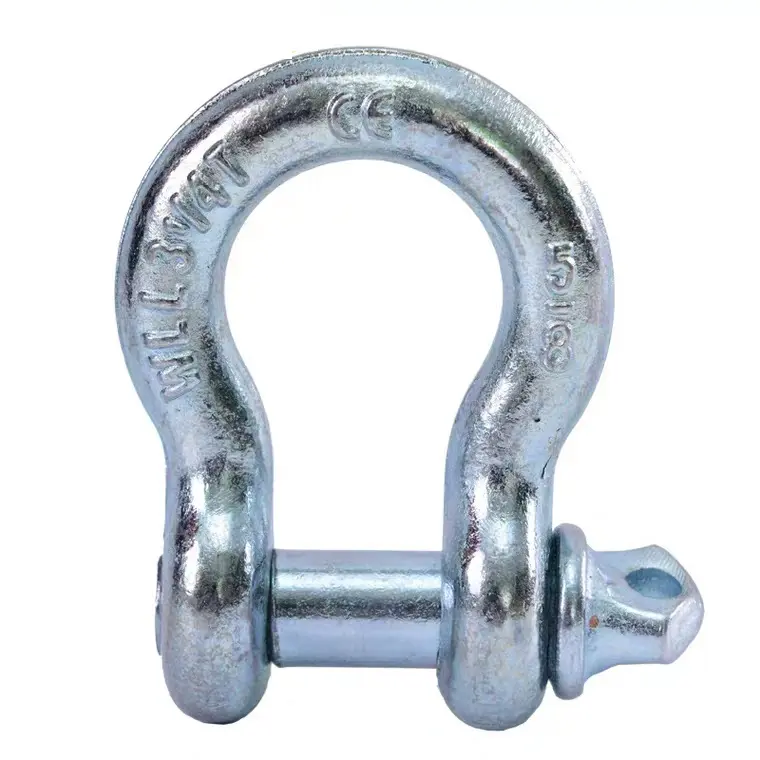News
Aug . 09, 2024 17:30 Back to list
Exploring the Importance and Application of Lifting Eye Bolts in Heavy Duty Industries
The Importance of the Famous Lifting Eye Bolt in Industrial Applications
In various industrial settings, the lifting eye bolt is an essential component that guarantees both efficiency and safety in material handling. Often overlooked in favor of more complex machinery or equipment, the eye bolt serves as a simple yet vital piece of hardware that plays a crucial role in lifting heavy loads. Its design, applications, and the importance of adhering to safety standards make it a noteworthy subject worth discussing.
Design and Functionality
The lifting eye bolt, characterized by its circular eye at one end and a threaded shaft at the other, is designed to be securely fastened to a load or structure. This bolt allows for easy attachment of a hook or chain, facilitating the lifting of heavy objects. Typically made from high-strength steel, lifting eye bolts come in various sizes and load capacities to accommodate different applications. Their durability ensures that they can withstand the substantial forces exerted during lifting operations.
The versatility of lifting eye bolts is one of their most appealing aspects. They can be used in manufacturing plants, construction sites, shipping docks, and even in maintenance tasks. These bolts can be secured to machinery, pallets, frames, and other load-bearing structures, making them indispensable in environments where heavy lifting is routine.
Safety Standards and Guidelines
While the lifting eye bolt itself is relatively simple, its safe and effective use requires stringent adherence to safety guidelines. Engineers and safety professionals emphasize the importance of selecting the appropriate eye bolt for specific applications. Factors such as load weight, lifting angles, and environmental conditions must be considered to avoid accidents.
famous lifting eye bolt

Incorporating safety factors into the design and application of lifting eye bolts is crucial. For instance, a common safety practice is to use a lifting eye bolt that has a working load limit (WLL) well above the intended load. A common rule of thumb is to choose an eye bolt with a WLL at least four times greater than the actual weight being lifted. This practice minimizes the risk of equipment failure and potential injuries.
Regular inspections of eye bolts are also paramount. Over time, eye bolts can wear down or sustain damage from repeated use or exposure to harsh conditions. Regularly checking for signs of corrosion, deformation, or stress fractures can help ensure that the lifting eye bolt remains safe for use.
Applications Across Industries
The applications of lifting eye bolts span across various sectors. In construction, they are predominantly used to lift steel beams, concrete blocks, and machinery, enabling efficient project progress. In shipping and logistics, eye bolts allow for easy and secure attachment of cargo during transport. Even in the realm of event staging, lifting eye bolts can be used for rigging, ensuring that heavy equipment is safely suspended.
The automotive industry also benefits from the use of lifting eye bolts during assembly and maintenance, as they allow for secure lifting points for vehicles and components. Lastly, in the realm of renewable energy, eye bolts play a crucial role in the assembly and maintenance of wind turbines, where massive components must be elevated and secured for installation.
Conclusion
In conclusion, the lifting eye bolt, while a simple piece of hardware, holds significant importance in various industrial applications. Its design, coupled with its versatility and the safety standards associated with its use, makes it indispensable in ensuring secure lifting operations across multiple sectors. By rigorously adhering to safety guidelines and regularly inspecting eye bolts, industries can continue to rely on this essential tool for safe and efficient material handling. As industries evolve and demand for heavy lifting increases, the value of the humble lifting eye bolt will undoubtedly remain a constant in the landscape of industrial equipment.
